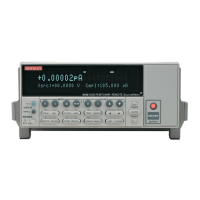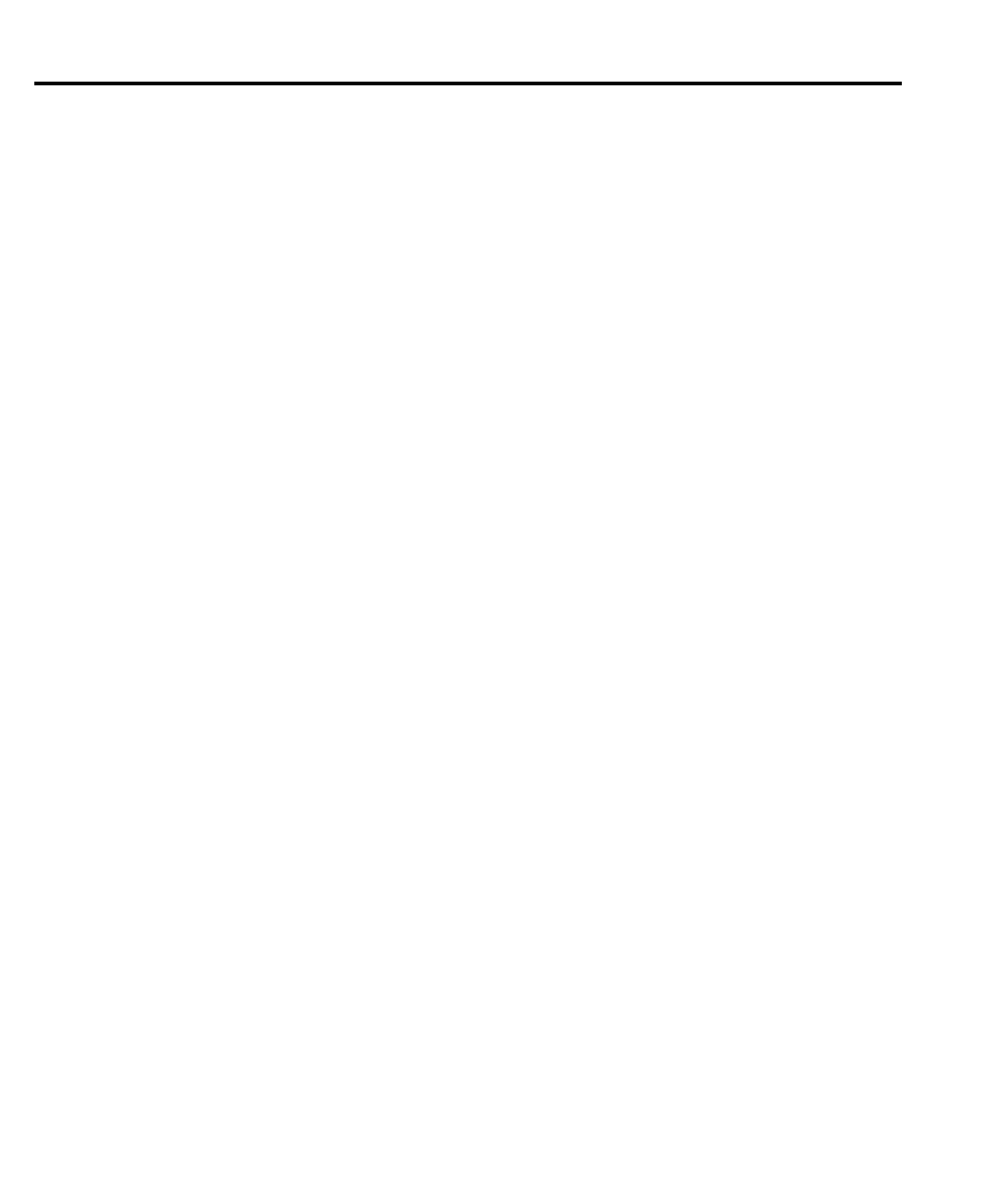17-36 SCPI Command Reference
Query :SOURce2? Query programmed source value
Description This command is used to define the 3-bit or 4-bit output pattern for the
Digital I/O Port when a test (limit 2, 3, 5-12) for the sorting mode passes.
Note that the output value can be specified in binary, octal, decimal, or
hexadecimal format. Use the table provided in :SOURce2<NRf> | <NDN>,
Description to determine the parameter value for the desired decimal digital
output pattern.
NOTE 16-bit I/O is available with the 2499-DIGIO option. The maximum 16-bit output
value is 65535.
:STATe <b>
:CALCulate2:LIMit[1]:STATe <b> Control LIMIT 1 test
:CALCulate2:LIMitx:STATe <b> Control LIMIT x test (x = 2, 3, 5-12)
Parameters <b> = 1 or ON Enable specified limit test
0 or OFF Disable specified limit test
Query :STATe? Query state of specified limit test
Description These commands are used to enable or disable LIMIT 1, LIMIT 2, LIMIT 3,
and LIMIT 5 to LIMIT 12 tests. Any limit test not enabled is simply not
performed.
When a limit test is enabled, the Digital I/O port comes under control of
limit tests. That is, the result of the testing process updates the output pat-
tern on the I/O port.
:FAIL?
:CALCulate2:LIMit[1]:FAIL? Read LIMIT 1 test result
:CALCulate2:LIMitx:FAIL? Read LIMIT x test result (x = 2, 3, 5-12)
Description These commands are used to read the results of LIMIT 1, LIMIT 2, LIMIT
3, and LIMIT 5 to LIMIT 12 tests:
0 = Limit test passed
1 = Limit test failed
The response message (0 or 1) only tells you if a limit test has passed or
failed. For Limit 2, Limit 3, and Limit 5-12, it does not tell you which limit
(upper or lower) has failed. To determine which limit has failed, you will
have to read the Measurement Event Register. See STATus subsystem.
Reading the results of a limit test does not clear the fail indication of the
test. A failure can be cleared by using a :CLEar command.

